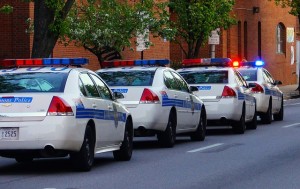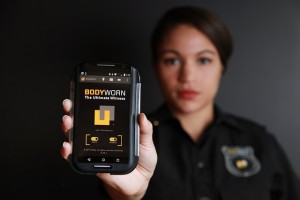 Two men recently attempted to rob a popular downtown Towson liquor store and one lost his life as a result. The attempted robbery occurred around 7 p.m. Monday night in the middle of Baltimore County’s capital city, and just blocks from the district and circuit courthouses. One of the two men was armed and pointed his handgun directly at the store clerk’s head while demanding money. What the robber didn’t realize was that the clerk was armed as well, and unfortunately for all those involved the clerk was forced to use his firearm. The 68 year-old clerk shot one of the robbers multiple times in the torso before both attempted to flee the scene on foot. One suspect got away and is still at large, while the other collapsed shortly after exiting the store. This suspect, a 25 year-old man from Baltimore eventually passed away from his injuries.
Two men recently attempted to rob a popular downtown Towson liquor store and one lost his life as a result. The attempted robbery occurred around 7 p.m. Monday night in the middle of Baltimore County’s capital city, and just blocks from the district and circuit courthouses. One of the two men was armed and pointed his handgun directly at the store clerk’s head while demanding money. What the robber didn’t realize was that the clerk was armed as well, and unfortunately for all those involved the clerk was forced to use his firearm. The 68 year-old clerk shot one of the robbers multiple times in the torso before both attempted to flee the scene on foot. One suspect got away and is still at large, while the other collapsed shortly after exiting the store. This suspect, a 25 year-old man from Baltimore eventually passed away from his injuries.
Baltimore County Police are currently investigating the incident, but the liquor store is back open for business and is no longer and active crime scene. After the police have concluded their investigation they will forward the case on to the state’s attorney’s office where a decision will be made whether to pursue charges against the clerk. It seems like a forgone conclusion that the prosecutor’s office will deem this an incident of self -defense, and the odds of the case even going to a grand jury are slim to none. Shop owners and employees are treated the same as homeowners and residents under the Maryland laws for possessing a handgun. No license is needed as long as the firearm is within the property of the business, and the person who possesses the gun is a bonafide employee or agent.
The question of whether the clerk was legally justified to shoot the robber is a basic self-defense inquiry. If the clerk reasonably feared for his life then he is justified to meet deadly force against deadly force. A handgun is by definition a deadly weapon, and pointing a gun at someone in a threatening manner is considered the use of deadly force regardless of whether a verbal threat to shoot was made. The clerk’s description of the events combined with the fact that police found a gun on the deceased would meet the requirements for the justifiable use of deadly force. The incident was likely captured on video that police and the state’s attorney will view, but video does not seem necessary to exonerate the clerk in this case. The deceased had been convicted of armed robbery and carjacking back in 2007, for which he served less than 10 years of a 20-year prison sentence. He was not out of jail for long before he violated his probation, and was scheduled for a VOP hearing in the Baltimore City circuit court in April. While this information is not exactly relevant to the state’s attorney’s decision with respect to the store clerk, it is definitely not something that will go unnoticed.
 Criminal Defense Lawyer Blog
Criminal Defense Lawyer Blog










